Introduced in 1991 as a midsize SUV, the Ford Explorer was one of the original luxury SUVs on the market. Replacing the Bronco II, the Explorer quickly earned the title as the most popular utility vehicle in America. Bear in mind, this was back when the SUV segment was just emerging and hadn’t become mainstream yet. People bought sedans instead of SUVs and the term crossover hadn’t even been coined yet.
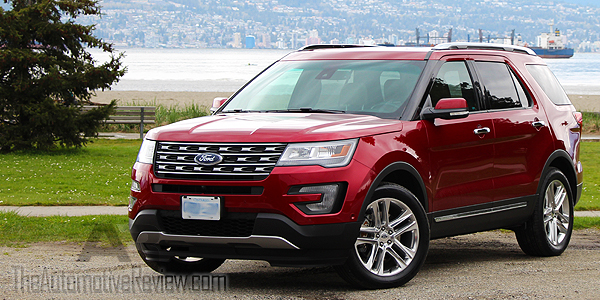
The Ford Explorer did indeed break through though. With a traditional body-on-frame layout and a reliable 3-liter V6 the first generation Explorer earned its crown as the SUV which started it all. Replaced in 1994, the Explorer continued receiving significant updates every 5 years or so. The second one followed in 2000, then 2005 and finally 2010, when the Explorer received a modern unibody platform. Designed by Jim Holland, the same man behind a lot of Land Rover’s products, the fifth-gen Explorer finally ditched the by-then outdated body-on-frame configuration in favor of a modern platform. The new 2017 Ford Explorer remains largely unchanged from last year, but that’s not necessarily a bad thing.
RUGGED BUT REFINED EXTERIOR DESIGN
Thoroughly revised for 2016, much of the exterior styling carries over for the 2017 Ford Explorer. This means a new front fascia, with a conventional honeycomb grille replacing the outdated three-bar grille as seen on the previous Explorer. Newly reshaped headlights give off a much more aggressive appearance, but they’re physically bigger too. Taller and wider, they also sit higher on the front fascia. With new, integrated C-shaped foglights the front end really does look sharper than ever before. That said, the 2017 Explorer hasn’t lost any of its rugged charm, despite looking more modern and elegant.
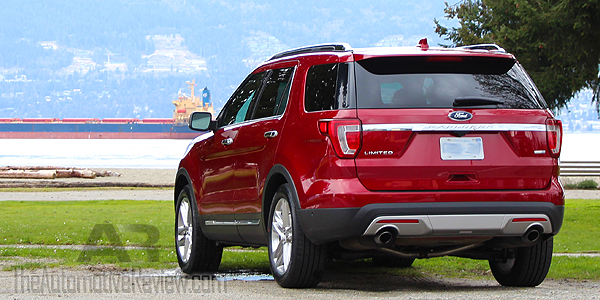
The rear end changes of the 2017 Ford Explorer aren’t as dramatic as the ones at the front, but they are definitely noticeable. Although most of the look and design are the same, size-wise, a lot of the elements have been changed. The similar-looking taillights are slightly smaller and integrated into the tailgate, which by the way also got a makeover with a different, more stylish appearance. From the side, you can’t really notice any of the upgrades. It’s clean and simple, with just a few accent lines here and there. The high waistline makes it appear taller than it actually is, and we especially love the way Ford integrated the line at the bottom of the doors, running from one wheel arch to the other. While the standard 18-inch wheels are great, the optional 20-inch alloys really make the 2017 Explorer stand out.
SPACIOUS INTERIOR LUXURY
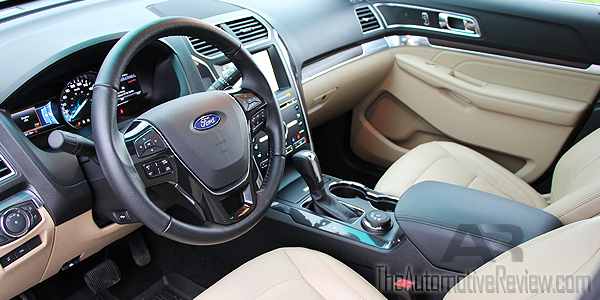
Ford put a lot of effort into optimizing the cabin of the 2017 Explorer to be more driver-oriented without messing too much with the existing design. You won’t find any outlandish design elements or lines in the cabin – it’s clean, simple and elegant throughout. Perhaps the biggest update is the addition of the Sync 3 infotainment system in place of the old one. It’s one of the best systems currently on the market and puts the Explorer’s display at the head of the pack. While it’s not classified as an ultra-luxurious SUV, from where the driver sits, it certainly feels like one.
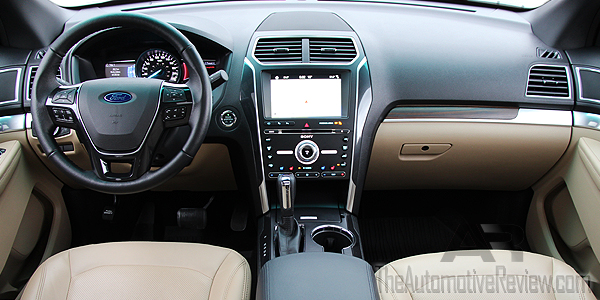
Headroom and legroom are more than generous in all rows, but it’s the front passengers who get spoilt with features. Wrapped in Nirvana leather with special quilted stitching and even micro-perforation, it genuinely feels like you’re sitting on a sumptuous sofa – if sofas had impressive lateral bolstering, multiple lumbar support positions and the option for massaging seats of course! Brushed aluminum, satin-finished Ash Wood inserts and a steering wheel wrapped in leather just add that finishing touch of luxury to the interior of the 2017 Ford Explorer.
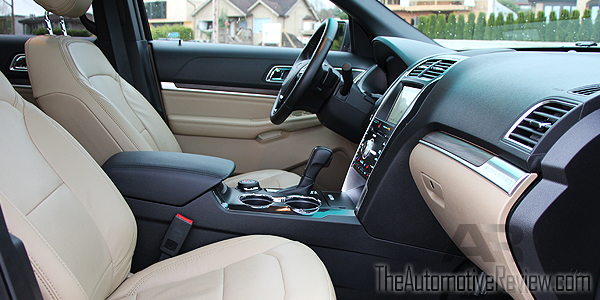
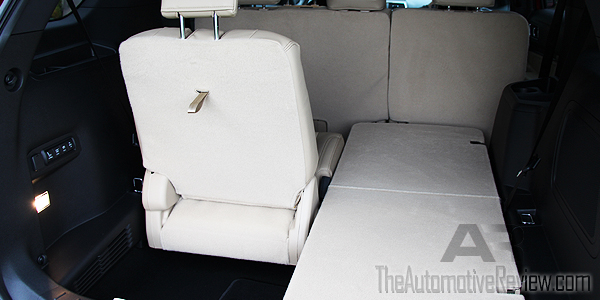
ENGINE AND PERFORMANCE
With a brand-new 2.3L EcoBoost introduced just last year, the 2017 Ford Explorer is as economical as it is powerful. Lifted straight from the Mustang EcoBoost, the unit produces 280hp and 310 lb-ft of torque in the Explorer, instead of the full-on 310hp in the Mustang, but it’s more than capable of zipping the Explorer around. The old 2.0L four-cylinder felt just a tad underpowered, but the new EcoBoost takes care of that. Don’t let the 2.3L capacity and four cylinder configuration fool you. It’s surprisingly quick.
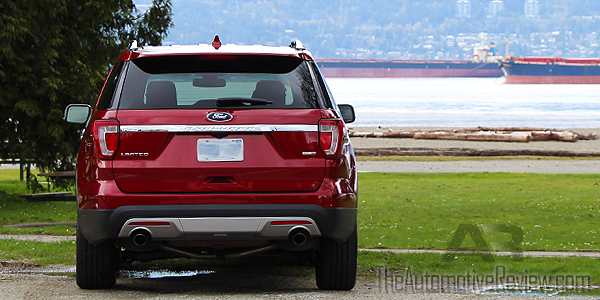
One step up, the 3.5L V6 engines carry over, meaning 290hp and 255 lb-ft of torque from the 3.5L midrange V6 engine and 365hp and 350 lb-ft of torque from the EcoBoost 3.5L top of the line V6 engine. All units get mated to a six-speed SelectShift Automatic, which makes for a fast and smooth acceleration performing gear shifts effortlessly. The 2017 Ford Explorer offers a sophisticated four-wheel drive system with a synced gauge displaying how much of the available power gets sent to the front and rear individually. The state-of-the-art Terrain Management system is also provided, to alter the driving performance for various exterior conditions like snow, sand and mud.
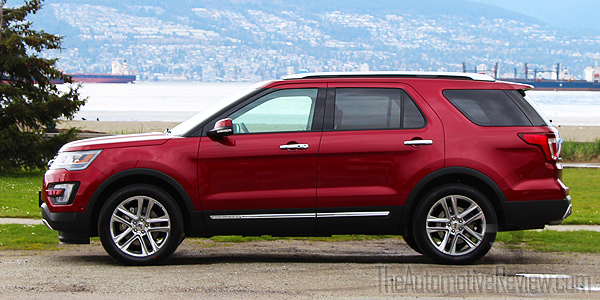
Overall, the 2017 Ford Explorer drives like a dream. Smooth and quiet cruising, seamless accelerations with no lack of power and precise handling through turns leaves passengers feeling confident, relaxed and able to enjoy the ride. The self parking feature really helped maneuver the 2017 Explorer into even the tightest parallel parking spots making this large vehicle seem much smaller. Although the fuel consumption is quite high as expected for a vehicle of this size, it’s a small tradeoff for the versatility of carrying 7 passengers in a luxurious cabin with plenty of power at hand.
FINAL THOUGHTS
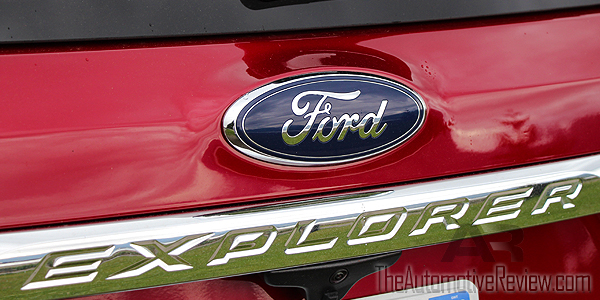
With an array of standard advanced safety systems, the Explorer has always been a top-pick for families in search of a vehicle to haul passengers and cargo. The new 2017 Ford Explorer further upgrades the previous model version with an even better infotainment system and a few tweaks here and there to keep it at the top of the segment. Starting at $33,499 for the base model and topping out at $59,099 for the top of the line Platinum, there’s a model that can fit a variety of drivers out there.




